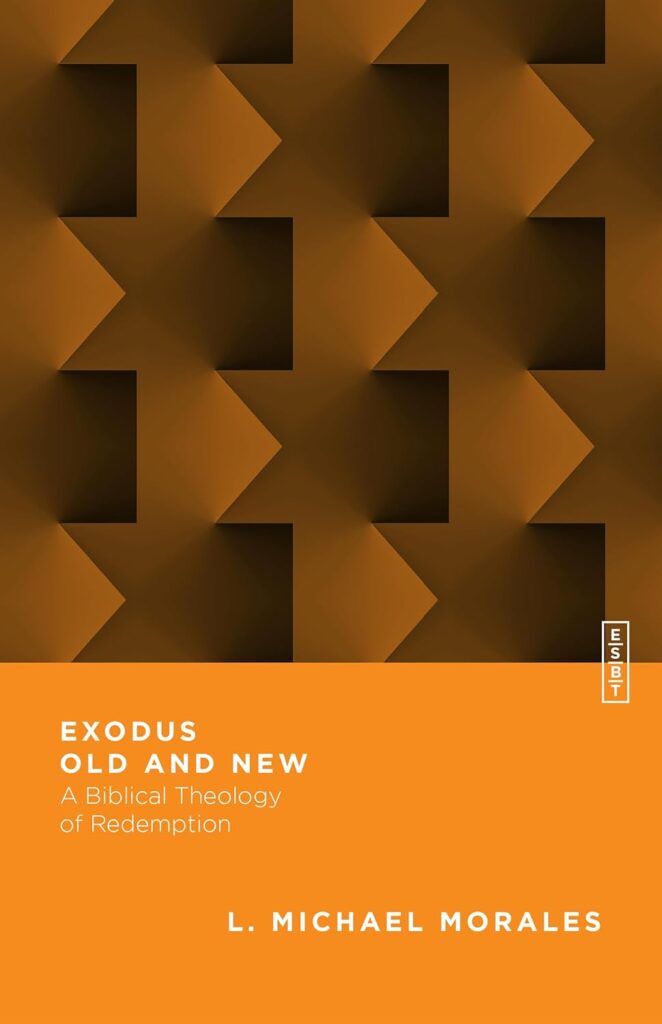This post is a review of L. Michael Morales’ excellent book, Exodus: Old and New: A Biblical Theology of Redemption. Tim Bertolet is a Research Fellow with the BibleMesh Institute.
In the study of the Bible the words “Biblical Theology” mean more than the sum of their parts. As a discipline Biblical Theology does not merely mean that we derive our theology from the Bible. Rather, Biblical theology as a discipline is concerned with aligning our understanding of the Bible with the unfolding of progressive revelation across the span of history as God reveals himself. Books on Biblical theology do not merely answer “what does the Bible say about _____” rather they are concerned with showing the scope of the Bible’s teaching in a manner that reflects upon the unfolding of this revelation.
With this definition in mind, L. Michael Morales has written an excellent book on the Biblical Theology of the Exodus entitled Exodus: Old and New: A Biblical Theology of Redemption. In this work, he traces the unfolding pattern of exodus redemption across the Biblical narrative. From the garden of Eden to the exodus of Israel from Egypt and the themes of the second exodus in the prophets that is fulfilled by the work of Christ, we find Exodus everywhere.

This book is a wonderful introduction to the theology of this theme of exodus, showing where the pattern laid down in the book of Exodus is repeated and expanded in the scope of redemptive history. It is also a model of how good Biblical theology is done and is very readable for the Christian with little to no academic background.
Exodus Across Scripture
The first chapter of the book begins with Genesis 1–3 outlining the exile of Adam and Eve from the Garden of Eden. Humanity was created to live in fellowship with God in the Edenic temple of God’s presence. In sin, Adam and Eve were sent into exile out of the east of the garden—a movement that bears symbolism to Israel’s future exile from her own promised land. Morales’ larger point in tracing some of these exile motifs even into the primeval history in Genesis is to show that exile always precedes an exodus. Exoduses are about redeeming people from their bondage and captivity, and restoring them from expulsion.
Elements of the exodus are prefigured in the Abrahamic narratives, according to Morales’ second chapter. Abraham is the head of the new people of God set apart and called out of the lands of the pagans. He experiences both an exodus from Ur (the land of the later Babylon) and an exodus out of Egypt both of which prefigure Israel’s own exodus and second exodus in the Biblical narrative. The strength of Morales’ treatment is his attention to the literary features in the book of Genesis and how it relates to forming our biblical theology.
The next series of chapters deal specifically with aspects of the exodus in the book of Exodus. He focuses on God making his name known to his people and to the nation of Egypt. He does an excellent job of explaining the symbolism in the events of the Exodus, the way the plagues defeat Egypt’s gods, Egypt and the sea is likened to Sheol/the grave, and being “down” in the land of Egypt is a kind of defeat by the grave, God’s defeat of the Sea is a defeat of the forces symbolizing death, as well as how delivering Israel from Egypt and the Sea is like a cosmic victory of the dragon associated with the sea.
Egypt and the sea is likened to Sheol/the grave, and being “down” in the land of Egypt is a kind of defeat by the grave, God’s defeat of the Sea is a defeat of the forces symbolizing death, as well as how delivering Israel from Egypt and the Sea is like a cosmic victory of the dragon associated with the sea
What Morales does is not vain speculation. Instead, he shows us how the elements in ancient Near Eastern mythology—common knowledge to anyone of that time—are actually undermined and overthrown as God delivers his people from Egypt through the Sea. Of course, Morales would affirm all these events are historical, and he shows the rich symbolism understood by the audience as they experienced all that happened. Israel is liberated from her captivity, she is delivered up from a grave-like existence, and the cosmic sea-dragon often associated with death is powerfully defeated by the living and true God.
Morales then looks, in chapter 6, at Moses as the Lord’s servant as he mediates for God’s people. Moses himself goes through a deliverance from Egypt and 40 years in the desert before he leads Israel on the same journey. As Morales draws out, Moses is not just about Moses but the Scriptures lead us to expect a new Moses who is a better mediator and ascends up a better mountain.
Chapter 7 is a brief treatment of the Tabernacle and temple in the Old Testament as how the cultic functions served to remind God’s people of Eden, exile, and exodus. Readers wanting to understand more of this would be well served by checking out Morales’ book of the Biblical theology of Leviticus: Who Shall Ascend to the Mountain of the Lord? (Intervarsity Press, 2015).
The second section of the book (chapters 8–11) deals with the second exodus theme in the later Old Testament books, most notably the prophets. Here particularly, Isaiah stands out deliverance from the exile in Babylon is likened to a second exodus. The figure of the Messiah in the “Suffering Servant” is like a second Moses. Here Morales pays particular attention to the subtle features that also indicate this is the Davidic figure fulfilling the Davidic covenant (151–156).
Finally, in chapters 12–14, Morales looks at the theme of the exodus in the New Testament. Chapter 12 is devoted entirely to John’s gospel. Here attention is given to the connection to the Passover and Jesus as the Passover lamb in a way that connects well to his discussion of the original Passover in chapter five. He also spends time discussing how the resurrection to New Creation is like an exodus and the reversal of the expulsion from Eden (166–172).
Exodus and Resurrection
Building on some of the earlier discussion of the exodus in the prophets (chapter 9), in chapter 13 Morales discusses the importance of the role of the Holy Spirit in bringing the new creation to us. He traces much of the imagery back to Eden (174–176). New Creation brings us from exile to an Edenic-like fulfillment where imagery is repeated and reused. Finally, in the last chapter, Morales lays out the importance of the resurrection as our ultimate exodus and the restoration of the glory promised to humanity in the garden. If coming out of Egypt in Exodus was like leaving Sheol/the grave, how much greater will be the triumph in our own resurrection from the grave (185–186)?
Morales lays out the importance of the resurrection as our ultimate exodus and the restoration of the glory promised to humanity in the garden. If coming out of Egypt in Exodus was like leaving Sheol/the grave, how much greater will be the triumph in our own resurrection from the grave (185–186)?
Overall, Morales has written a wonderful and concise work on the Biblical theology of the resurrection. His writing style is good and he does not lose the forest for the trees, making this an ideal book (along with others in the series) to recommend for people who want to dip their feet into the pool of Biblical theology before they jump off the diving board into the deep end. A work like this can be read for personal enrichment, in a small group setting (although you’d have to make your own discussion questions), or used as supplemental material for teaching Sunday school or even an undergraduate course. It is a sure guide to solid doctrine and an excellent exemplar of how Biblical theology at its best is done.

Tim Bertolet
Timothy Bertolet currently serves with the missionary sending agency ABWE International, located in Harrisburg, PA. He has also served as youth, and then a senior pastor at two different churches, and earned a PhD in New Testament Studies from the University of Pretoria.
